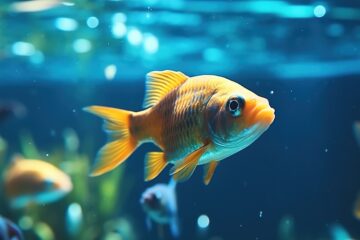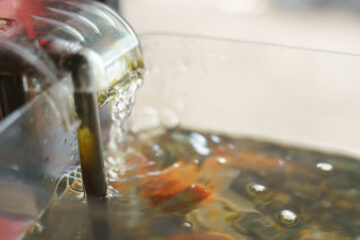Introduction
The best practices as to how to cycle an aquarium has changed over the years but the concept is constant. The Nitrogen Cycle is the key to happy and healthy fish, so the more you understand this, the more successful you will be in the hobby.
In this article, I will talk about 3 different ways to cycle your aquarium. Each of these methods have advantages and disadvantages. It is critical you understand the Nitrogen Cycle, so let’s dive into the chemistry first.
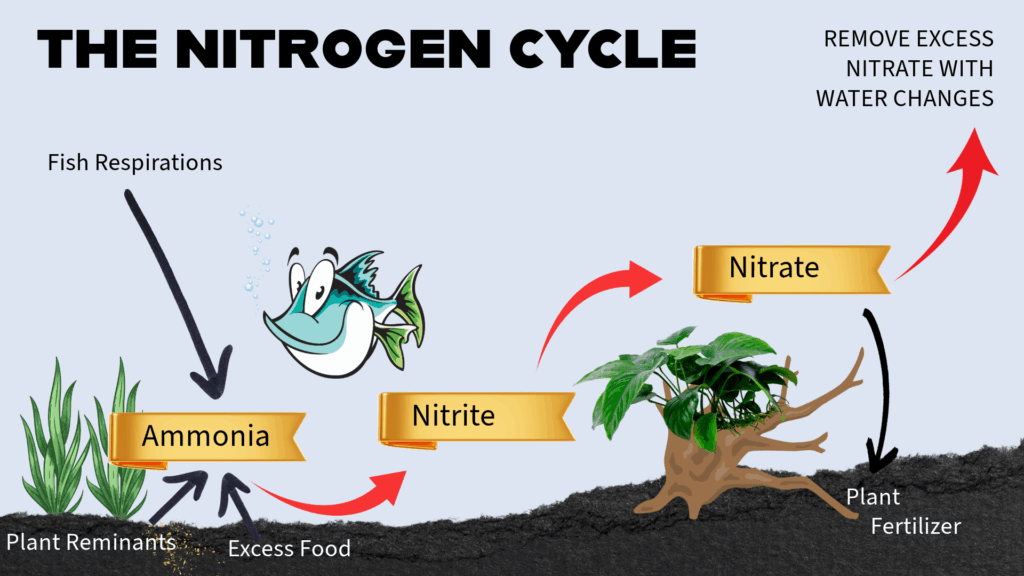
The Nitrogen Cycle
The Nitrogen Cycle is what we use to describe the chemistry going on in all of our home aquariums. You can follow along using the diagram above. As fish exist in the aquarium, they create waste in the form of Ammonia. Ammonia is toxic to fish but with the help of bacteria it will break down. Ammonia is also created by uneaten food and dead plants.
As the ammonia builds, the bacteria goes to work to convert to a substance called Nitrite. Nitrite is even more toxic to fish, but as it continues to break down it converts to Nitrate. Nitrate makes great fertilizer for plants, and the more plants you have, the more Nitrate your tank will be able to handle.
Nitrates at low levels are safe for fish, but the only way to lower your nitrate levels is to do water changes as Nitrate represents the end of the “cycle”.
It takes time for the transformation between Ammonia to Nitrate to occur, as the bacteria needed builds up over time. The more bacteria produced, the faster the process can happen and the more waste your tank can convert to Nitrate. Its this bacteria build-up, that we refer to as a “cycled aquarium”.
The term “cycled aquarium” means that your tank is successfully converting Ammonia to Nitrate at a bacteria level which makes the water safe for fish to live in. During the transition phase is most dangerous for fish as chemistry spikes adversely affect their health.
The only way to confirm that your tank is “cycled” is to do a water test using test strips or test the water using a testing kit (see our Aquarium Toolkit for recommended testing equipment). When doing the test you are looking for a zero reading for both Ammonia and Nitrite. If either of these are not zero, your tank is NOT CYCLED.
If you test for Nitrate and it is not zero, it usually means that your tank is starting to break down the ammonia and nitrite, but it doesn’t have enough bacteria in the tank to handle it fully. See the methods below on how to, as safely as possible, continue cycling your aquarium.
Cycling with Fish
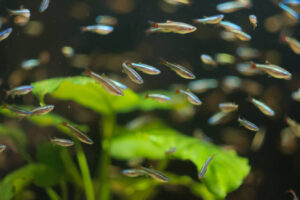
The most traditional way of cycling a fish tank and building the necessary bacteria is to use fish to start creating the ammonia waste to start the process. This method requires close monitoring to keep your fish healthy during the process and some fish are better suited to handle the stress this can cause them. If you are just starting out, this is probably the best option for you. I have used this method many times and rarely have fish casualties if monitored often and correctly. Here’s how.
- Its important to first ensure that your filter is operating and circulating the water as well as the heater is keeping the tank at the optimum temperature. (this depends on the species but most need between 76-78 degrees Fahrenheit)
- You are going to need a fish species that is know to be hardy and can handle a wide range of tank conditions. Personally, I tend to go for White Cloud Moutain Minnows or a species of Platty for “fish-in” cycling. Make sure only to add a small number of fish at a time. This depends a lot on the size of your tank, but typcally I’d start with 3-4 fish to get the cycle started.
Here is where the work starts. These fish are going to start producing waste in the form of Ammonia right away, and you won’t have the bacteria to take care of it initially. So you MUST monitor the water conditions carefully.
Personally, I would check the ammonia level every 2-3 days. It will not be zero, and that’s ok, but you don’t want it to get too high for the fish to tollerate. The number here is highly debated, but for me, I want this number less than 1ppm.
If the number is more than 1ppm, do a 20% water change and wait another 2-3 days and recheck.
After a couple of weeks of this, I would now test for Nitrite and Nitrate as well and make note of the numbers. What you want eventually is to have the following results:
- Ammonia 0ppm
- Nitrite 0ppm
- Nitrate > 0ppm
If you don’t get these numbers, be patient, and continue to repeat these steps every 2-3 days until your testing shows this. Once achieved, congratulations, your tank is “cycled”.
IMPORTANT NOTE
Now that your tank is cycled, when you add more fish, add them slowly, allow time for the bacteria to adjust to the additional ammonia load. If you add too many at once, you may overload the bacteria and have spikes in unwanted ammonia and nitrite. When adding more fish, test regularly to ensure the parameters are staying to where they need to be. Do a water change, if the parameters start to climb. Refer to some of our other guides about bioload and how many fish you can have in a given size aquarium.
Fishless Cycle
This method is becoming more and more popular which involves spiking your tank with ammonia to kick-start a cycle. Here are some of the details:
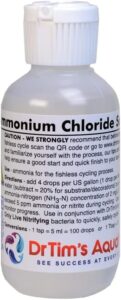
First step is to dose the tank (as per directions on the bottle) with Ammonium Chloride (as shown at left). This will “simulate” the ammonia waste and start the cycle. Many of the commercially available chemicals will have instructions on how to re-dose and monitor the tank, but generally speaking, you monitor much the same way. Because there are no fish in the tank, you can let the ammonia levels spike and massive levels and just let the bacteria build and slowly bring down the ammonia levels and create the Nitrite and Nitrate necessary for a cycled aquairum.
Be extremely careful to ensure that the ammonia is at zero before introducting any fish or aquatic life to a tank being cycled this way. Its been known that the water parameters can fluctuate wildly while the cycle is establishing.
Ensure you are getting zero ammonia and zero nitrite before adding lifestock.
Fishless Cycle with Plants
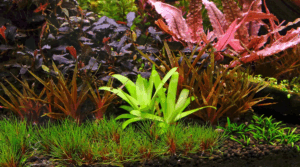
I’ve added this to the discussion as I’ve had a lot of success with the method. I basically aquascape the tank with plants as desired, then dose the Ammonia as a “fishless” cycle and monitor the parameters. I’ve found that it helps establish the plants before fish are introduced and I now have an established source to consume Nitrate (the end product of the cycle). I have done this with several tanks now with great success.
Using Existing Biological Media
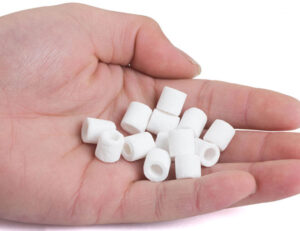
If you have established tanks, or friends with established tanks and you can take some of the media from those tanks, that will always be the best way to cycle an aquarium. Using this method, you can add fish right away (not too many), and start enjoying your aquarium immediately.
Its important to watch your parameters closely as you add fish though, to keep the parameters safe for your aquatic life.
Conclusion
Whichever method chosen, you need to test Ammonia, Nitrite and Nitrate regularly (once a week) to see where you are in the cycle. A properly cycled aquarium may take weeks to achieve, be patient, and watch your parameters to avoid fish casualties. Remember, you are looking for a zero reading for Ammonia and Nitrite, and the test showing Nitrate is present. Once achieved, don’t add a lot of fish all at once, go slow to let the bacteria build at a similar rate.

